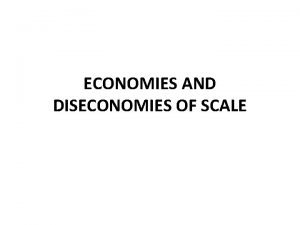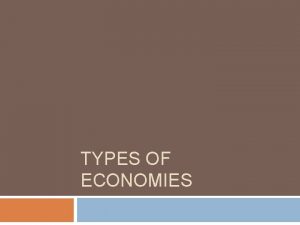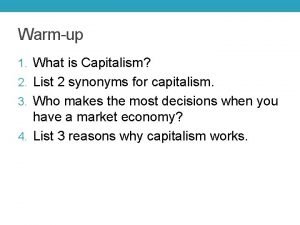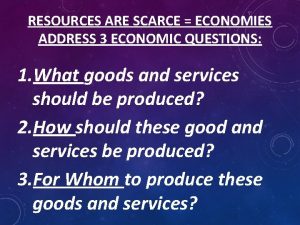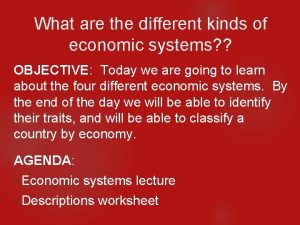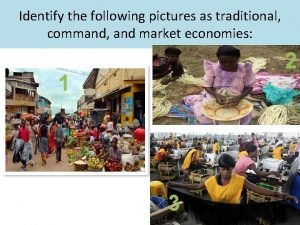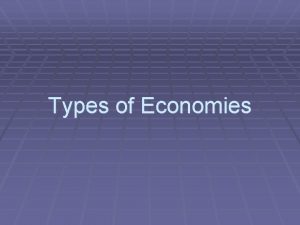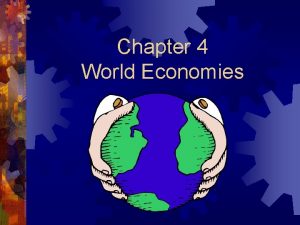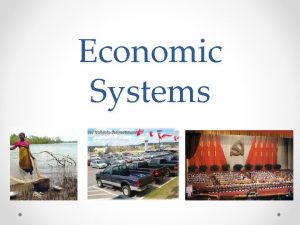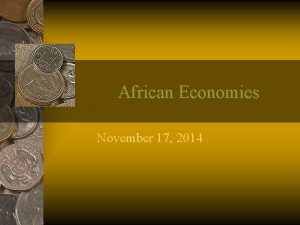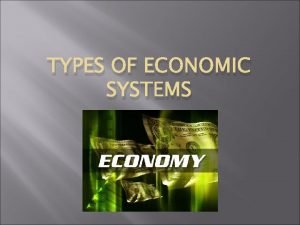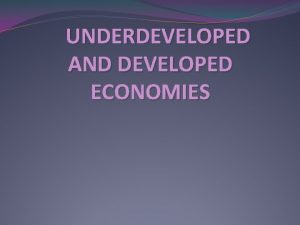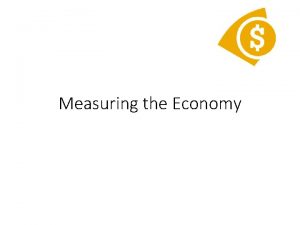Types of Economies Traditional Economy In a traditional















- Slides: 15

Types of Economies

Traditional Economy • In a traditional economy, roles and decisions are decided upon by custom • Each person plays a specific role • Some examples are: the Australian Aborigines, and northern Canada’s Inuits


Traditional Economy • Advantages: everyone knows which role to play and there is little uncertainty about WHAT, HOW, and for WHOM to produce. • Disadvantage: is the discouragement of new ideas and new ways of thinking. This leads to a lower standard of living than in other societies.

Question: • How would your life be different if you were living in a traditional economy?

Command Economy • In the command economy, a central authority (the government) determines WHAT, HOW, and FOR WHOM to produce • Command economies include: North Korea, Cuba, the former Soviet Union and the People’s Republic of China.


Command Economy • Advantages: – The ability to drastically change direction in a relatively short period of time. – Many basic health and public services are available at little or no cost

Command Economy • Disadvantages: – Consumer needs may not be met – Hard work is not rewarded – The necessary decision-making bureaucracy delays decisions – Little flexibility to deal with day-to-day problems – Individual initiative goes unrewarded

Market Economy • In a market economy, producers and consumers determine WHAT, HOW and FOR WHOM to produce. In each market transaction, the consumers dollar acts like a “vote” making sure that producers continue to provide the goods and services that consumers want to buy.

Market Economy • Examples of countries with a market economy: Japan, Canada, the United States, South Korea, Singapore and parts of Western Europe.


Market Economy • Advantages: – Ability to adjust to change – Individual freedom – Minimum amount of government involvement in economy – Ability to have a voice in economy – Variety of goods and services provided – Great consumer satisfaction

Market Economy • Disadvantages: – Inability to meet every person’s basic needs – Inadequate job of providing some highly valued services such as justice, education and health care – High level of personal uncertainty – Sometimes economic failure

Question: • Which economy do you believe is best and why?
 Traditional economies meaning
Traditional economies meaning Athenian economy vs sparta economy
Athenian economy vs sparta economy Diseconomies of scale definition
Diseconomies of scale definition Types of economies of scale
Types of economies of scale Economics mixed economy
Economics mixed economy Three types of economies
Three types of economies Traditional economy advantages
Traditional economy advantages Traditional economy examples
Traditional economy examples Traditional economy definition economics
Traditional economy definition economics Traditional economy definition economics
Traditional economy definition economics Economic systems cartoon
Economic systems cartoon Traditional economy advantages
Traditional economy advantages Traditional economy cons
Traditional economy cons Advantages of mixed economy
Advantages of mixed economy Identify the following pictures
Identify the following pictures Traditional economy definition economics
Traditional economy definition economics


